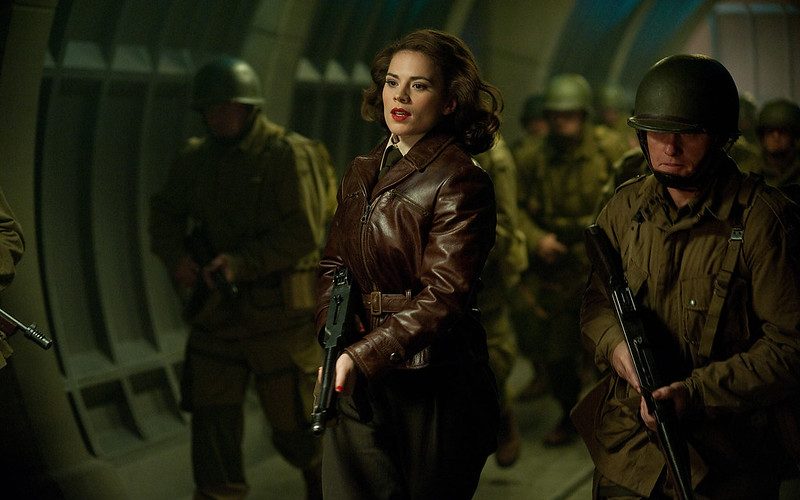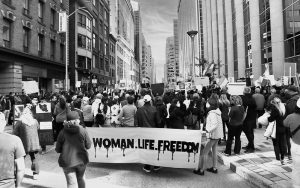Representation in media (comics, films, television series, and video games) has become a hot button issue over the past decade.
However, in March of 2022, the Center for the Study of Women in Television and Film of San Diego State University found “that men outnumbered women onscreen by a factor of 2 to 1 in 2021”, with the Executive Director of the Center stating “Despite the major disruptions in the film business over the last couple of years, onscreen gender ratios have remained relatively stable”. The report additionally found that “Female characters were younger than their male counterparts, and more likely to have a known marital status” and “Girls and women were more likely to have personal life-related roles and goals”, further reinforcing very strong foundational stereotypes.
The Marvel Cinematic Universe (MCU) is no exception. One of the largest and most economically profitable media franchises in the history of cinema, the MCU has had their share of sexist, derogatory, and stereotypical depictions of women. In an article of the Journal of Student Research, high school student Folukemi Olufidipe from Doral Academy Charter High School in Miami, Florida, strongly and effectively describes how the female depiction of women in the MCU has been incredibly poor.
The author writes, “Marvel’s upcoming productions, many of which are female-focused, still marginalize the roles of their superheroines which is a concern for the future of the film industry”, describing female characters being sexually objectified, being sacrificed to serve a male storyline or character arc, and being deprived of their overall agency and power “these films uphold a patriarchal structure and reinforce social norms that objectify women in their workplace and elsewhere” noting these representations “mold cultural standards of female identity that influence behavior”.
Quite clearly, the MCU has a problem and one that is not an outlier in the rest of the film industry, as the research by San Diego State University shows.
However, in at least one, rather niche area, the MCU does excel in their representation of women; particularly, in their representation of women within Intelligence Communities (IC) around the globe via the character of Peggy Carter.
Diversity and Women in the U.S. Intelligence Community
Before diving into how the MCU portrays women in the intelligence world and why Peggy is an amazing example of that, it is beneficial to explore the Intelligence Community (IC) from a historical and contemporary perspective, and the effect women have had on the field.
Often, the world of intelligence collection/analysis, clandestine activity, codebreaking, and support has been a male-dominated community. This is likely unsurprising given the modern-day intelligence world came of age in the 20th century, started by individuals who were born and grew up at a time when women were still second-class citizens and had no right to vote. But, women have been at the forefront of intelligence work since ancient times, from the Book of Joshua in the Hebrew/Christian bible to Valley Forge to the U.S. Civil War; in these capacities, they worked to transfer and relay messages, eavesdrop on sensitive conversations, and analyzing cryptologic information. In the Second World War, women took on an even more frontline, tactical role, not only operating behind enemy lines to carry messages but also in demolition and sabotage operations. Since then, women have been incredibly integral to the fights against Communism, terrorism, and totalitarianism the world over.
Contemporarily, the IC has certainly become better at properly diversifying their respective signatory members. Since the late 1980s, the IC has “through hearings, legislation, and reporting requirements” tried to diversify their workforce with substantial assistance in 2016 from President Barrack Obama in developing a memorandum which “directed agencies with a national security mission to report detailed demographic and voluntary applicant workflow data publicly”, initially being optional for the IC but becoming mandatory in 2020.
The Annual Demographic Report from the Office of the Director of National Intelligence (ODNI) for Fiscal Year (FY) 2018 found that, from FY 2017, the amount of female new hires increased by 2.4% while the number of women in managerial and supervisor positions increased by a full percent to 37.3%.
This comes across in media portrayals too: Jack Ryan from Tom Clancy’s novels and films, Jason Bourne in the eponymous series, Ethan Hunt in the Mission Impossible series, Sam Fisher from the Splinter Cell video game series, and most notably James Bond from the long-lasting film series based off of Ian Fleming’s seminal spy fiction novels. These films and television series have long and troubling histories with the depiction of female representation and even those films that have female characters at the helm (such as Red Sparrow and The 355) rather perform poorly at creating a strong, feminist message, in some cases drifting straight back into misogyny.
However, not all pieces of media or female characters are like this. Some are rather intelligently written and written with the mindset of making proper representation. This is where the character of Peggy Carter and the 2015-2016 television series Agent Carter of the MCU come into play.
Peggy Carter and a Positive Depiction of the Female Intelligence Operative
Peggy Carter is one of the more well-known and fan-loved members of the MCU. In the comics (which have been consistently revamped and reorganized as time goes on), Carter was an American, French resistance fighter who fell in love with Captain America during the war and joined S.H.I.E.L.D in the 1960s.
Her cinematic biography, while somewhat changed from the comics, follows a similar trajectory. Carter is now a member of the British Armed Forces, holding a PhD from the University of Cambridge and trained as a codebreaker at Bletchley Park before being recommended to join the Special Operations Executive (SOE), the wartime special forces and reconnaissance unit of the British military. From here on, she worked with Captain America during the war and, as is mentioned throughout 2011’s First Avenger and into 2014’s Winter Soldier, became a founding member of S.H.I.E.L.D, likely retiring in the 1990s.
In all of the media in which Carter appears (most prominently in Agent Carter), she displays the characteristics of the ideal intelligence operative, be it an intelligence analyst or a paramilitary operations officer. She is intelligent and experienced enough to engage in the laborious and tedious process of analyzing code and sensitive military communications alongside understanding the technical aspects of such work. She also is physically fit and able to compete against any male counterpart, in many cases excelling beyond them in hand-to-hand combat or small arms. She is determined, resilient, intellectually strong, and displays all of the qualities necessary to engage in any kind of intelligence activity. She is, in many ways, the quintessential intelligence agent.
Furthermore, a great deal of this takes on an honoring effect; thousands of women worked in Bletchley Park specifically to break codes and were highly integral to the war and intelligence effort and women took on a frontline role in the Second World War to carry out highly dangerous and clandestine sabotage, reconnaissance, and search-and-destroy operations which contributed significantly to the protection of France and Yugoslavia, their actions being considered a major success by contemporary historians of the war effort.
From a cinematic representation perspective, many have written about how Carter and Agent Carter are strong representations of women and females. Throughout the series, most prominently in the first season, Carter is shown to be disregarded by her superiors and fellow agents (all of whom are male). She is often relegated to duties beneath her station or non-field work, derided for being Captain America’s love interest (frequent comments being made about that being the reason she gained her position), and experiencing all sorts of misogyny and stereotypes being thrown at her by managers, co-workers, and villains alike.
In a thesis paper by Friska Anggreanika at the Soegijapranata Catholic University in Indonesia which focuses on Peggy Carter and the representation of women in Agent Carter, the author writes how Carter is a depiction of Girl Power largely in the fact that she has agency over herself and her body; she can be easily in touch with her masculine side, being powerful in her professional life and strong in the workplace, but also just as in touch with her feminine side as well. She is independent and confident, something we see somewhat in other espionage fiction and media, but one that is rarely done as well as it is in Agent Carter.
In a 2015 post for Antenna, a graduate student and faculty-run forum coming out of the Department of Communication Arts at the University of Wisconsin-Madison, graduate student Nao Tomabechi discusses Agent Carter as a feminist force. She describes how, in multiple scenes, Carter dismantles the “Damsel in Distress” trope and stereotype and overall is portrayed “as a fully developed character who is struggling with her emotions, career, and undercover work … a woman who gained strength but also suffered a tragic loss with the war, trying to build a life of her own where she does not quite fit in”. While still unsure of herself and her role in the world around her, she still nevertheless is a strong, independent, capable woman in a heavily male-dominated area.
Conclusion
The depiction of Peggy Carter as an intelligence operative is a very honoring and true depiction of intelligence work and the history that women have within the field. It holds true to the levels of intellect, physical strength, personal courage, duty, and honor that can be found in every female member of the Intelligence Community, from the intelligence analyst at the country station to the clandestine services operator in the field to the logistician at headquarters. Her depiction also honors those women who went abroad and served their country in a clandestine capacity, in some cases never returning home.
The portrayal of Carter as an intelligence hero is an honoring measure to all of the women from the Second World War who served in defense of democracy and against totalitarianism, but also a strong stereotype for women desiring to enter the intelligence field or, simply, trying to find a cinematic role model.
This is not to say, however, that everything about the character of Peggy Carter is good. From a cinematic perspective, Carter is more troublesome.
The MCU has a long history of promoting female superheroes of a certain type; “mostly white, able-bodied, and heterosexual”. There is very little real representation of non-white, disabled, and LGBTQ+ individuals with superpowers in the MCU.
Returning to the Journal of Student Research article, Olufidipe describes how in Avengers: Infinity War (one scene of many throughout Phases One to Three), Scarlet Witch is surrounded by Thanos’ foot soldiers yet is saved by members of Wakanda’s Dora Milaje. She writes, “In Marvel’s case, they execute tokenism by making these scenes feel forced and patronizing to viewers, as opposed to celebratory for female inclusion”, with neither offering “significant contributions to the overall narrative of its film, leaving the final fate of the battle in the hands of Marvel’s superstars: the men”.
Marvel has made headway to a certain, if very limited, degree. The 2021 film Black Widow was an exceptional feminist storyline, one that saw Scarlett Johansson reclaim the superhero’s role and agency while being a fun and enjoyable motion picture. The 2022 television series She-Hulk, while facing some valid criticisms, has been largely hailed by the mainstream as being a feminist piece of television. Even with Peggy Carter (as the newly imagined Captain Carter), there is valid feminist and imperialist criticism against her character, especially when it is at the expense of other characters.
As is so very often the case, there is still an incredibly long way to go with the representations of African, Hispanic, Asian, Disabled, and Queer characters in the MCU. As there are already many characters within the MCU who fit these descriptors (e.g., America Chavez, Nakia, Phastos, Maya Lopez, Okoye, Sersi) yet have not been widely embraced by the rest of the MCU leadership, Marvel and Disney do have a real chance and ability to accurately portray these individuals and make a long-lasting, permanent, and positive impression upon society’s depiction and understanding of these individuals and give them an agency like never before.
Whether this will happen, though, very much remains to be seen.







very clear and good article easy to understand. Thank you